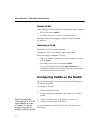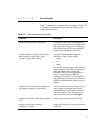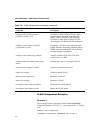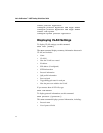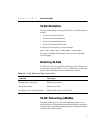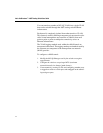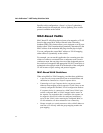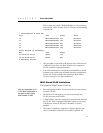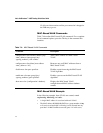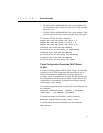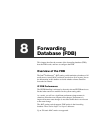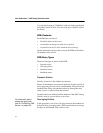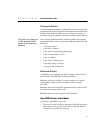
114
Intel
®
NetStructure™ 480T Routing Switch User Guide
Specific to this configuration, a Layer 1 or Layer 2 redundancy
method would also be employed, such as Spanning Tree or other
protocol available on the switch.
MAC-Based VLANs
MAC-based VLANs allow physical ports to be mapped to a VLAN
based on the source MAC address learned in the forwarding
database (FDB). This feature allows you to designate a set of ports
that have their VLAN membership dynamically determined by the
MAC address of the endstation that plugs into the physical port.
You can configure the source MAC address-to-VLAN mapping
either offline or dynamically on the switch.
For example, you can use this application for a roaming user who
wishes to connect to a network from a conference room. In each
conference room, the user plugs into one of the designated ports on
the switch and is mapped to the appropriate VLAN. Connectivity is
maintained to the network with all of the benefits of the configured
VLAN in terms of QoS, routing, and protocol support.
MAC-Based VLAN Guidelines
When using MAC-to-VLAN mapping, consider these guidelines:
• A port can only accept connections from an endstation/host and
should not be connected to a Layer-2 repeater device.
• Connecting to a Layer-2 repeater device can prevent certain
addresses from mapping to their respective VLAN if they are not
correctly configured in the MAC-VLAN configuration database.
If a repeater device is connected to a MAC-based VLAN port,
and the configured MAC-to-VLAN mapped station enters on
the repeater, any endstation that is attached to the repeater can
be mapped to that VLAN while the configured endstation is
active in that VLAN. After removing the configured MAC-to-
VLAN endstation, all other endstations lose connectivity.
• Groups are used as a security measure to allow a MAC address to
enter into a VLAN
only when the group mapping matches the
port mapping.



